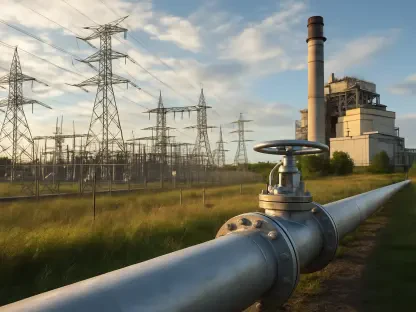In the heart of Alabama, the City of Tuscaloosa has long grappled with a persistent and troubling issue that threatens both public health and environmental integrity—sewage spills that have marred its streets and waterways for decades, leading to widespread concern. This crisis, driven by an aging wastewater infrastructure, has resulted in millions of gallons of untreated waste contaminating local ecosystems, prompting legal action and public outcry. Recently, a landmark agreement with the Alabama Department of Environmental Management (ADEM) and environmental advocacy groups has sparked hope for a lasting solution. This deal, forged after years of disputes, commits the city to substantial investments and systemic reforms. As stakeholders unite in a shared vision for cleaner water, the question remains whether these efforts will finally curb the overflows that have plagued the region. This development offers a pivotal moment to examine the challenges, the proposed fixes, and the broader implications for community safety and environmental stewardship.
A Historic Agreement for Change
The recent agreement signed between Tuscaloosa, ADEM, Black Warrior Riverkeeper, and Friends of Hurricane Creek represents a turning point in addressing the city’s sewage spill problem. Stemming from lawsuits over violations of the Clean Water Act and state pollution laws, this legally binding pact was finalized after intense negotiations and a notice of intent to sue issued over a year ago. The collaboration underscores a unified resolve to tackle a systemic issue that has seen over 42 million gallons of untreated sewage and industrial waste spill into public spaces and waterways since records began escalating. ADEM’s state-level lawsuit preempted federal action, allowing environmental groups to intervene and ensure their voices shaped the outcome. The focus now shifts to the Circuit Court of Tuscaloosa for approval, which will determine the enforceability of the commitments made. This agreement not only addresses legal accountability but also sets a precedent for how municipalities can work with regulators and activists to confront environmental crises head-on.
Beyond the legal framework, the agreement outlines specific obligations for Tuscaloosa to overhaul its wastewater management. A key component is the pledge to invest approximately $18 million over the next decade in critical infrastructure upgrades. Projects include modernizing the Fletcher Water Treatment Plant’s UV system to reduce E. coli contamination, rehabilitating the extensive “Mercedes” sewage line, and upgrading lift stations with permanent pumps to prevent failures during heavy rainfall. Additionally, the city will enhance transparency through improved public notifications about spills, ensuring residents are informed of risks. These measures aim to address the root causes of overflows, such as broken pipes and overwhelmed systems, which have long compromised water quality. While the financial commitment is substantial, the success of these initiatives hinges on consistent execution and ongoing oversight by all parties involved, highlighting the complexity of reversing decades of neglect in municipal systems.
Environmental and Community Impacts
The environmental toll of Tuscaloosa’s sewage spills has been staggering, with untreated waste seeping into backyards, streets, and vital waterways like Hurricane Creek, posing severe risks to ecosystems and public health. Heavy rainfall often exacerbates the issue, overwhelming an outdated infrastructure riddled with leaking manholes and failing pumps. Environmental groups like Black Warrior Riverkeeper have documented the scale of contamination, emphasizing that such spills threaten aquatic life and recreational use of local waters. The agreement’s focus on reducing overflows through targeted upgrades offers a glimmer of hope for restoring these natural resources. However, the challenge lies in balancing immediate spill prevention with long-term system reliability, as aging infrastructure cannot be fully replaced overnight. The collaborative efforts of activists and regulators reflect a shared urgency to mitigate these impacts before irreversible damage occurs to the region’s environmental fabric.
For the community, the stakes are equally high, as sewage overflows endanger public safety and diminish quality of life in Tuscaloosa. Residents have endured the consequences of pollution, from health hazards to restricted access to local waterways for fishing or leisure. The agreement’s emphasis on better public notifications is a critical step toward empowering citizens with timely information about spill events, enabling them to take precautions. Meanwhile, infrastructure projects like modernizing treatment plants and sewage lines aim to prevent future incidents, promising safer neighborhoods over time. Voices from groups like Hurricane Creekkeeper express cautious optimism, noting that while the commitments are promising, their implementation must be closely monitored to ensure tangible benefits. Community trust will depend on visible progress, as years of frustration over inaction have left many skeptical. This dual focus on environmental recovery and resident well-being underscores the broader significance of the city’s pledge to transform its wastewater system.
Building a Sustainable Future
Looking back, the journey to this agreement revealed deep-rooted challenges in Tuscaloosa’s wastewater management, where decades of underinvestment collided with growing environmental and public health concerns. The legal battles that unfolded exposed systemic failures, but they also catalyzed a coalition of regulators and advocates determined to drive change. The substantial financial pledge and detailed infrastructure plans stood as testaments to what collaborative accountability could achieve, even if progress remained incremental at times. Each step, from replacing outdated systems to enhancing public communication, marked a hard-won victory against a backdrop of persistent overflows. Reflecting on these efforts, the resolve of all parties to prioritize cleaner water and safer communities became a defining narrative, setting a benchmark for other municipalities facing similar struggles.
Moving forward, the path to a sustainable solution in Tuscaloosa hinges on rigorous implementation and continuous evaluation of the agreed-upon measures. Stakeholders must prioritize regular updates on infrastructure projects, ensuring that the $18 million investment translates into measurable reductions in sewage spills. Establishing independent audits and public reporting mechanisms could further bolster accountability, while fostering dialogue between the city and residents will help maintain momentum. Environmental groups should continue their watchdog role, pressing for adherence to timelines and goals. Beyond immediate fixes, exploring innovative technologies for wastewater management could offer long-term resilience against future challenges. As the Circuit Court reviews the agreement, the focus must remain on turning promises into action, ensuring that this historic collaboration paves the way for lasting environmental stewardship and a healthier future for all in the region.









